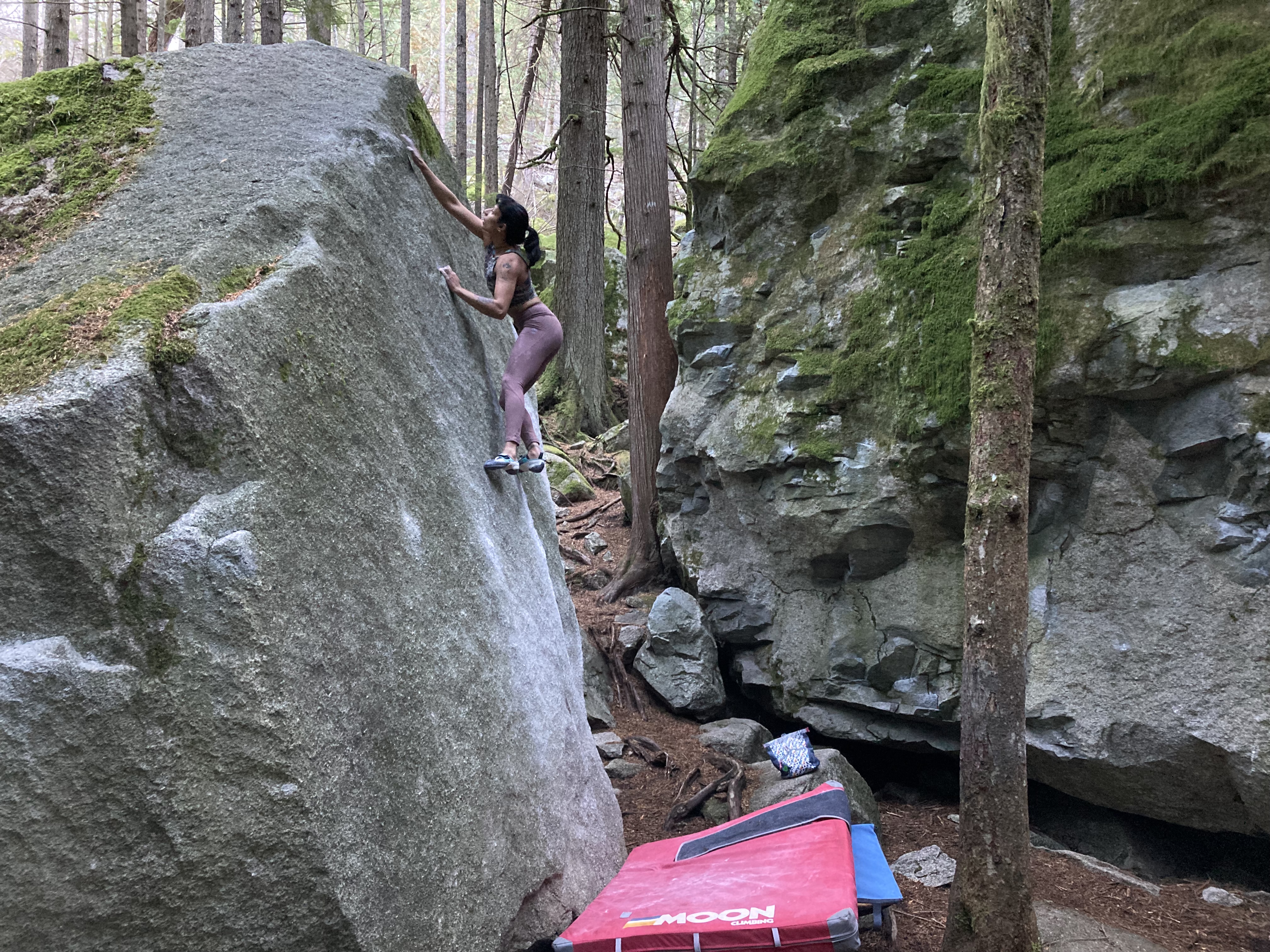
Ways To Improve Your Climbing Part 2 - Ayesha Khan
photo credit Tom Peckitt
Learn Your Own Body/Mind and Distractions
If you’re reading this, there is every likelihood you’re a climbing nerd; listening to interviews with the likes of Aidan Roberts on your commute to work, or perhaps re-watching something from the Mellow catalogue while you cook dinner. In these coveted climbing podcasts, the pros will sometimes give us a small insight into their training regime, and while there may be pockets of wisdom which can effectively be applied to our own progression, to take Max the Future’s fingerboard routine and try to apply it to yourself is unwise. Most of us are balancing working full time, relationships and that never ending list of life administration with a training schedule and whatever outdoor sessions we’re lucky enough to squeeze in. It is rarely productive to attempt to replicate the exact training patterns of those at the top of the climbing genetic pool, who have 24 hours a day to optimise their lives around excelling at the sport we all love.
Whether you are working with a coach, or piecing together a plan yourself, getting to know your own body is essential. Consider your athletic background, injury history, weekly schedule, circadian rhythms, and whatever other component of your life you can decipher patterns from. Track not only your sets and reps, but energy, motivation, tweaks and how you managed them during the session, emotions and thought patterns during good sessions, and bad. There are many different ways to train for climbing, and we all have vastly different strengths and weaknesses. In order to improve at a steady rate and maintain progressive overload in a sustainable way, it's imperative that we understand how our individual bodies work, and avoid being swayed and distracted by what the masses and pros are preaching.
You Can Always Improve Your Tactics
Sometimes life gets in the way of training; illness, poor sleep or deadlines at work disrupt our routine and we find ourselves set back yet again. Or maybe nothing gets in the way of training and we land in Rocklands or Switzerland or Spain, having trained for months, expecting to feel strong and powerful on the project and instead feel weak and potatoey. It's easy to become flustered in these scenarios, but regardless of your physicality on the day, sending is (almost) always possible if we can convince our mind to resist the rabbit hole of doom.
This is easier said than done, but one thing we can quite easily control is our tactical approach. Session management is one of the most underrated ways to produce a send, and can often have significantly more impact than if you just happen to be feeling strong on the day. Here are some of the factors that you should consider if you want to manage your session effectively:
- Warm up. Obviously we all know that we need to warm up…. But this pre-send preparation goes so much deeper than a fingerboard fondle and a few pull ups. Are you psychologically warmed up for the fall you might have to take? Have you warmed up for the exact positions you’ll be in through the crux? Have you practised the speed at which you’ll have to climb through the crux? Have you practised spotting your footholds? There is so much we can do to replicate the sensations we’ll experience on the send, without having to go ground up every single time. The more you use your warm up to simulate exactly what you’ll have to do, the less energy and skin you’ll waste before you’re ready for a proper go. This isn’t to say you can’t pull onto the actual climb. Unless you’re going for an onsight/flash, pulling into positions on a climb without actually doing moves is a great way to get your body recruited head to toe.
- Having too much, or too little, rest between attempts can also be a deal breaker. The general rule is a minute per move plus five, but this will vary depending on the steepness, length, weather, friction, and person. If you rest for too long, you may become unfocused and unrecruited, if you don’t rest for long enough, you’ll carry the fatigue from your last burn and moves will feel harder than they should. By paying close attention to how long you rest and how you feel after each attempt, you can build a personalised profile of optimal rest times under varying conditions.
- If you’re on a project that you know well, having a “to-do” list that you work through before you start having send goes can be a good way of feeling optimally recruited (yet still fresh) before having send goes. After your initial off-the-wall warm up, and potentially some easier climbs, this to-do list should consist of practising some links and crux moves. This means that when you reach those crux sequences from the beginning, they will feel familiar and you can blast through them with confidence. This is especially important if you’re consistently falling at the same place on your send goes. Taking the opportunity to link through this section in your warm up will help you to unlearn the habit of falling on the same move.

